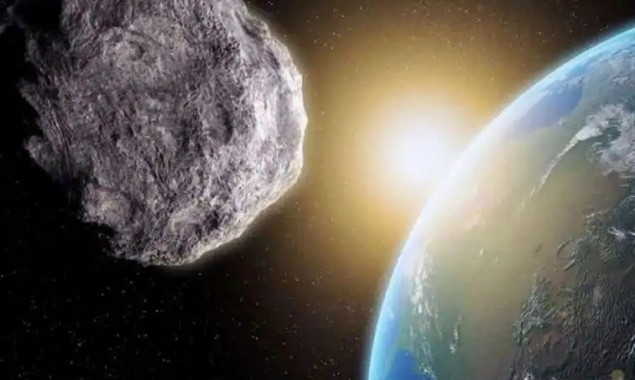When Man Became Rich Overnight After Meteorite Landed In His House
Imagine what you would do if a Meteorite or a space rock...

The US space agency NASA has informed that five asteroids have been observed approaching the Earth, one of which is larger than a stadium.
NASA says one of the five is one kilometre in diameter, about the size of a large stadium, twice the size of London’s Big Ben and two and a half times the American Statue of Liberty.
It is travelling at a speed of about 124 kilometres per hour and will pass through the earth by March 21, 2021.
Asteroids are minor planets, especially in the inner solar system. They are also called planetoids or minor planets.
These terms have historically been applied to any astronomical object orbiting the Sun that did not show a planetary disk and did not have the properties of a comet.
Minor planets were discovered in the outer solar system and they were identified as unstable surfaces resembling comets, they were often distinguished from the asteroid belt in the asteroid belt. In this article, the term “asteroid” refers to the minor planets in the inner solar system, including Jupiter.
There are millions of astronauts, scattered remnants of many planets, bodies inside the sun’s new solar nebula that never grew so large to become a planet.
The asteroid belt between Mars and Jupiter orbits a large part of the known asteroid orbit, or co-orbiting Jupiter (Jupiter Trojan).
However, other orbital families have significant populations, including objects close to Earth. Individual asteroids are classified by their characteristics, the majority falling into three main groups: C type, M type, and S type.
They were named after and are usually identified with a mixture of carbon-rich, metallic and silicate, respectively. The amount of asteroids varies greatly. The largest is about 1,000 kilometres (625 miles).
There are stars drawn from asteroids and meteorites. In the case of comets, the difference is one of a mixture: while asteroids are composed primarily of minerals and rock, comets are composed of dust and ice. In addition, the asteroid formed closer to the sun, the comet inhibits the growth of ice.
The difference between asteroids and meteorites is basically the same size: meteoroids are less than one meter in diameter, while asteroids are more than one meter in diameter. Finally, meteorites can contain either humorous or asteroid material.
Only one asteroid, 4 Vista, with a relative ref reflective surface, is usually visible to the naked eye, and this only occurs in extremely dark skies when it is well-positioned.
Rarely, small asteroids passing close to the Earth are visible to the naked eye for a short time. As of October 2017, the centre of the Minor Planet had data on about 745,000 objects in the inner and outer solar system, of which about 50,504,000 had enough information to position them.
The United Nations celebrated World Asteroid Day on June 30, 2018, to raise awareness about Asteroid.
The date of International Asteroid Day commemorates the anniversary of the Tunguska asteroid impact on Siberia, the Russian Federation, on June 30, 1908.
Catch all the Sci-Tech News, Breaking News Event and Latest News Updates on The BOL News
Download The BOL News App to get the Daily News Update & Follow us on Google News.